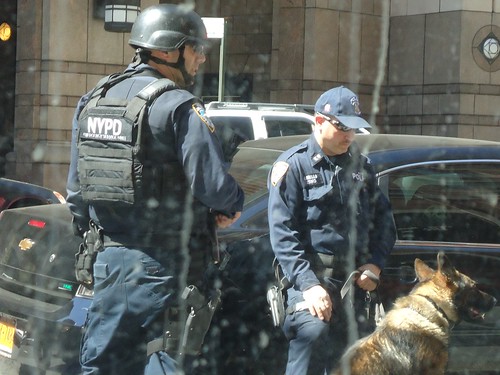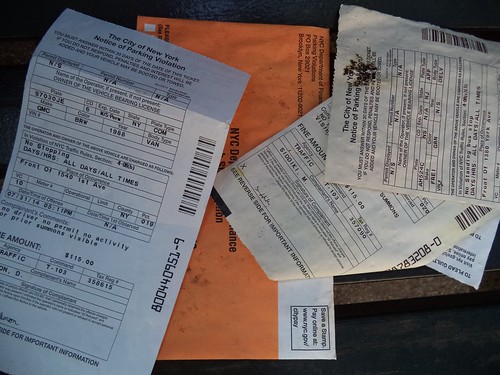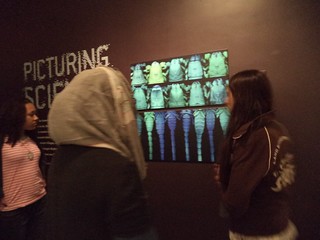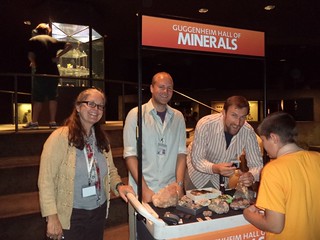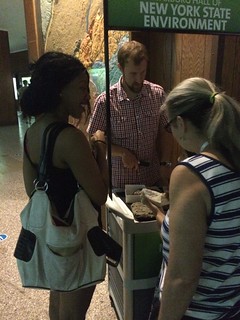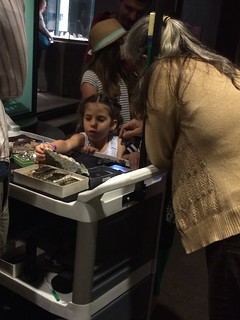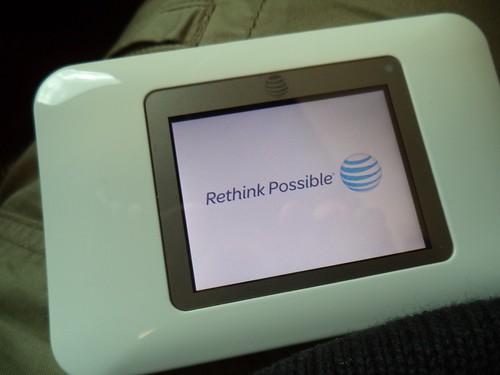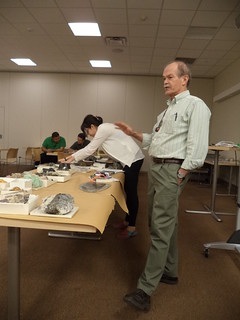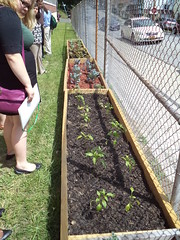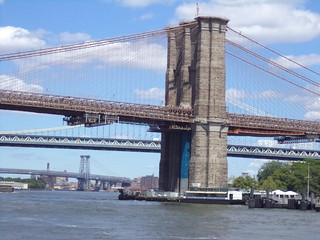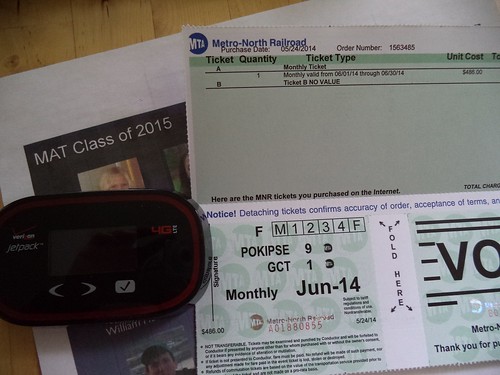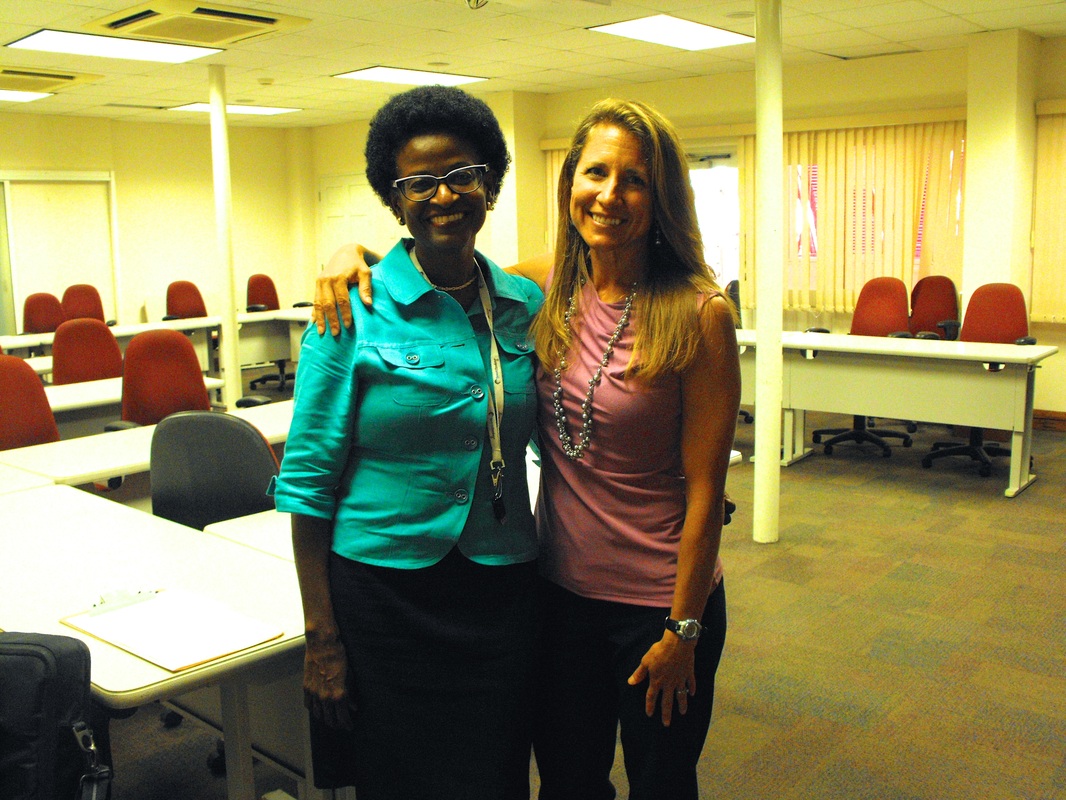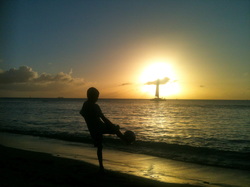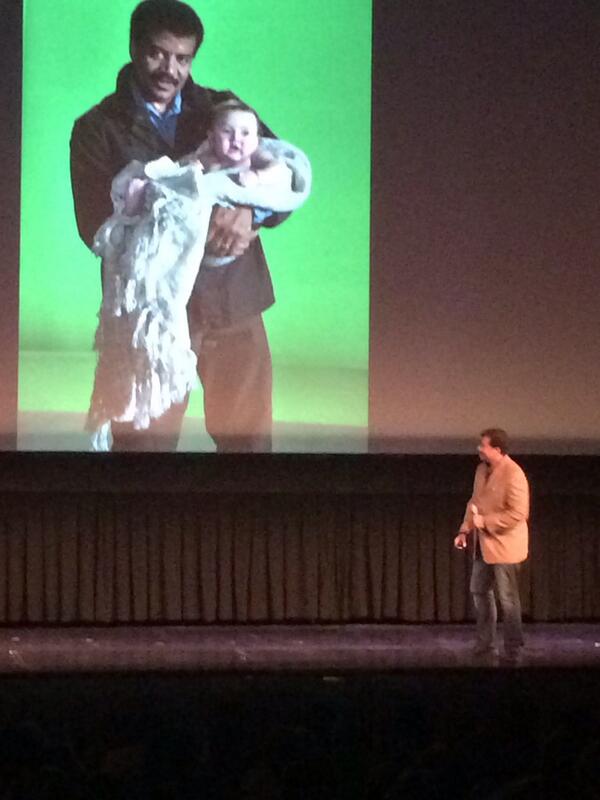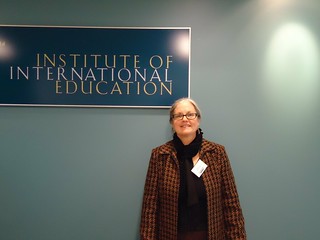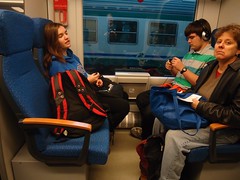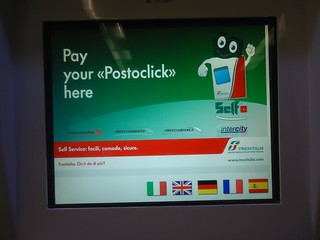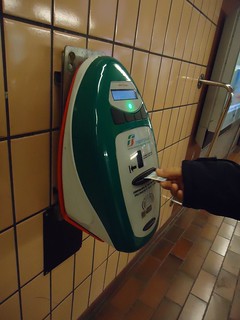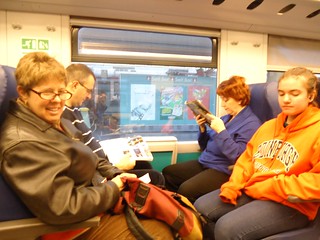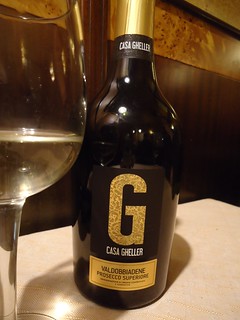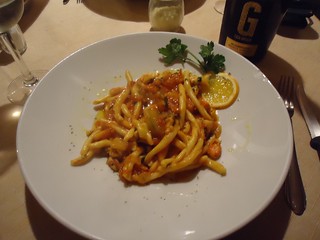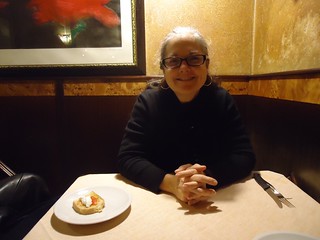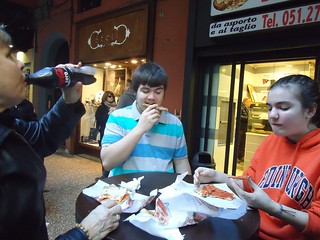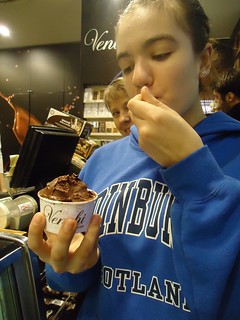New York City is so...invigorating, eye-opening, contemplation-making. There is a stark contrast between the community of my life in Poughkeepsie and that community that I see here. As I make my way to the Museum, I walk through rich and poor neighborhoods, some people walk their dogs and take up lot's of space on the sidewalks, some are asking for money with a sign, some have on work uniforms as they hustle to catch the subway. There are young kids walking with huge backpacks to get to summer day camp bus pick-up, there are babies in strollers who look nothing like the women pushing the prams, and there are stinky streets everywhere.
New York, it's a nice place to visit, but I wouldn't want to live here.
And do people even pay their parking tickets in NY?! I find one or two each morning walking in through Central Park.
Pages
8.22.2014
More About the Master of Arts in Teaching Program at AMNH - Videos!
I stumbled on these videos today and thought I should post them. What they present about the MAT program is pretty close to my own experience.
8.11.2014
Three weeks of Co-teaching
We wrapped a three-week stint of co-teaching in the Lang Science program at the Museum. Lang is a unique program that brings kids from all around New York City to learn a science topic (or multiple topics) over three weeks. But it's not just one and done. There's an application process and the program starts when kids are going into the sixth grade and they stay with it until they graduate from high school. Every summer. For seven summers. Wow! Not only that. The Langsters commit to coming to the Museum for 18 additional Saturdays throughout the school term. That is a lot of science and a lot of love for science learning on the part of the young people in Lang. The MAT program is incorporated into the Lang program by having us co-teach lessons (that's me teaching about chemical weathering and stratigraphy), guide Lang students on research design, work with the lead Lang instructor on activities and whatever other way we can see ourselves jumping in to help out.
The following is a blog post that I wrote in Moodle. Moodle is a learning management system and no one, outside of my classmates, my instructors, and maybe the MAT program administration, can see these posts we make and the comments to those posts. I do not like Learning Management Systems, but I have used them as a student, I have used them as an instructor, and my children have had to use them, so I can see the efficacy of using one. I just don't like them. So I am freeing some of the content that's hidden away. This post was more of a comment to a thread on class and privilege that I felt compelled to respond to and then felt I wanted to share with this blog.
So, the week with the Lang 7th graders has come and, sadly, gone. What a wonderful group! I will miss them and will be more than glad to take a position as a middle school teacher.
About the socio-economic dynamics much discussed here…I didn’t really see it. I mean, I did not see it being a problem in the learning environment. Sure, there were the kids who were all aflutter about going to one of the other kid’s country house. (It was probably in or near Poughkeepsie, BTW.) It was only the girls who got to go, so I felt badly for the boys. At least one of the girls was not going ("my mom said we have something to do that day") and I felt badly for her, too. But, frankly, I don’t think I’d want my daughter going (by limo!) to a country house so she can feel like she has a life that is less-than or more suck-ish than this kid’s life.
OK, that aside, I feel like almost all of the learners spoke up in Lang 7th grade. I did not see the "rich" kids speaking more than the "financial aid" kids. (And I did not see an economic divide at all in the 9th to 12th research group.) I mean, how do we really know who has money and who doesn't? I did not get that list. We could make major assumptions, but perhaps the kid who talked about walking to the bottom of the Grand Canyon was not really bragging, she might have been lying or she might have been a college professor’s child. Or her family is middle class and they know that trips like that are good for kids' development.
So much of what a kid goes through in life is dependent upon the zip code he or she is unlucky (or lucky) enough to be born into and those economics are passed along through the generations. The pull-yourself-up-by the-bootstraps American ethos is a myth, IMO. We need to treat all kids like they are born into the high-rent district and teach like all kids belong in a program like Lang. That is our challenge.
What is clear is that, if I imagine myself teaching in the high-needs school in my neighborhood, I will see in my classroom kids mostly from low-income families. Some of them will be homeless. But there are pockets in my area, in that school district, that are middle class and upper middle class. Some of those kids will go on summer trips to The Shore or will have passports with stamps in them, but some will have never left Poughkeepsie. I want all of them to feel like they can raise their hand, add their thoughts and observations, and know in their hearts that I think that what they have to say is important and matters.
The following is a blog post that I wrote in Moodle. Moodle is a learning management system and no one, outside of my classmates, my instructors, and maybe the MAT program administration, can see these posts we make and the comments to those posts. I do not like Learning Management Systems, but I have used them as a student, I have used them as an instructor, and my children have had to use them, so I can see the efficacy of using one. I just don't like them. So I am freeing some of the content that's hidden away. This post was more of a comment to a thread on class and privilege that I felt compelled to respond to and then felt I wanted to share with this blog.
So, the week with the Lang 7th graders has come and, sadly, gone. What a wonderful group! I will miss them and will be more than glad to take a position as a middle school teacher.
About the socio-economic dynamics much discussed here…I didn’t really see it. I mean, I did not see it being a problem in the learning environment. Sure, there were the kids who were all aflutter about going to one of the other kid’s country house. (It was probably in or near Poughkeepsie, BTW.) It was only the girls who got to go, so I felt badly for the boys. At least one of the girls was not going ("my mom said we have something to do that day") and I felt badly for her, too. But, frankly, I don’t think I’d want my daughter going (by limo!) to a country house so she can feel like she has a life that is less-than or more suck-ish than this kid’s life.
OK, that aside, I feel like almost all of the learners spoke up in Lang 7th grade. I did not see the "rich" kids speaking more than the "financial aid" kids. (And I did not see an economic divide at all in the 9th to 12th research group.) I mean, how do we really know who has money and who doesn't? I did not get that list. We could make major assumptions, but perhaps the kid who talked about walking to the bottom of the Grand Canyon was not really bragging, she might have been lying or she might have been a college professor’s child. Or her family is middle class and they know that trips like that are good for kids' development.
So much of what a kid goes through in life is dependent upon the zip code he or she is unlucky (or lucky) enough to be born into and those economics are passed along through the generations. The pull-yourself-up-by the-bootstraps American ethos is a myth, IMO. We need to treat all kids like they are born into the high-rent district and teach like all kids belong in a program like Lang. That is our challenge.
What is clear is that, if I imagine myself teaching in the high-needs school in my neighborhood, I will see in my classroom kids mostly from low-income families. Some of them will be homeless. But there are pockets in my area, in that school district, that are middle class and upper middle class. Some of those kids will go on summer trips to The Shore or will have passports with stamps in them, but some will have never left Poughkeepsie. I want all of them to feel like they can raise their hand, add their thoughts and observations, and know in their hearts that I think that what they have to say is important and matters.
7.26.2014
Some Photos, What's Been Going on at the Museum
I've gotten to see and do a lot of interesting things at AMNH so here are just a few photos of those things.
 |
| We got the inside look at he AMNH Library. They have a large rare book collection (but I didn't see it). |
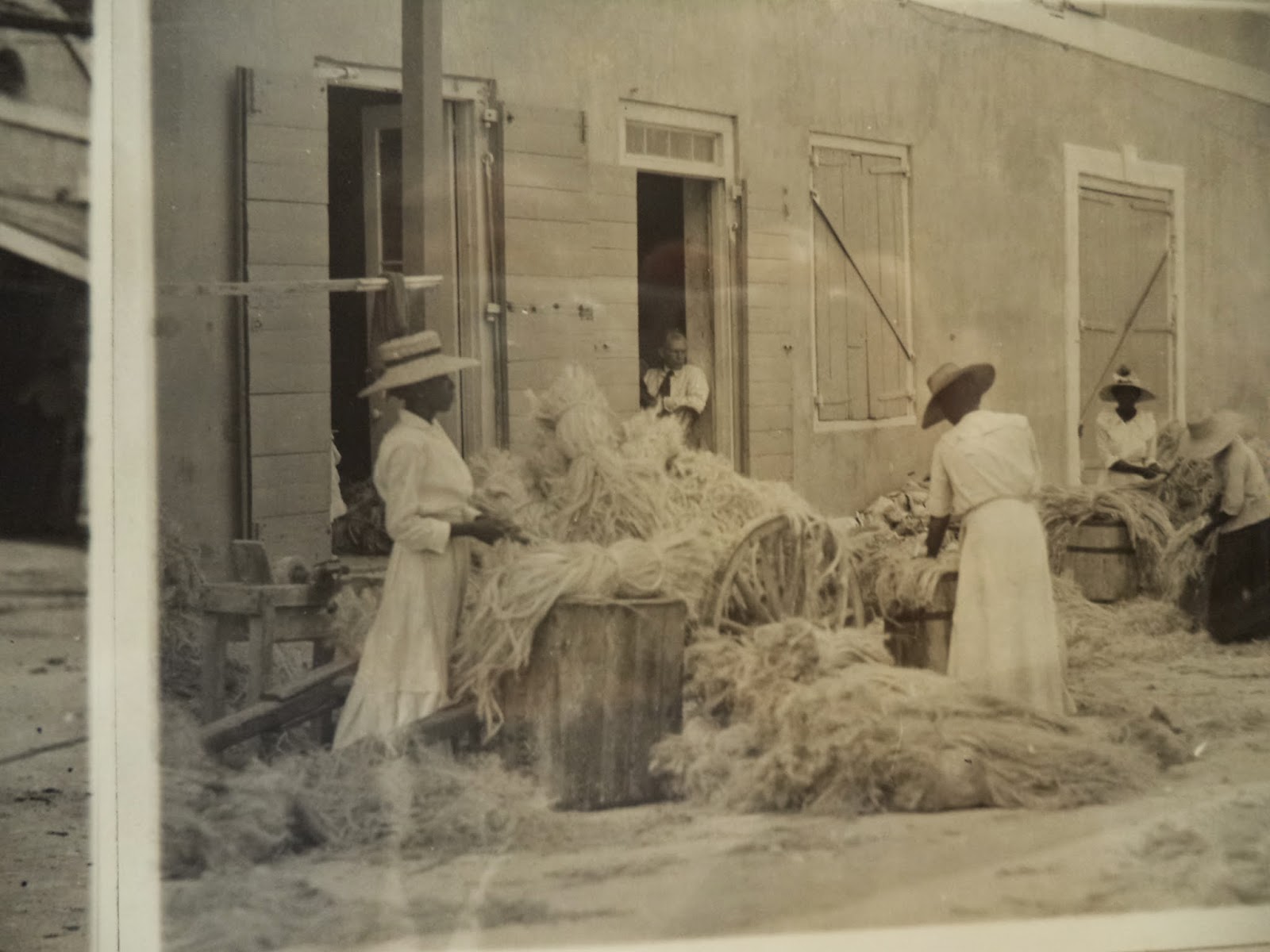 |
| Also in the AMNH Library, an extensive collection of paper photographs like this one. This photo was taken in Barbados in 1919. |
 |
| Behind the scenes with an ichthyologist. These are two coelacanths. |
 |
| Some skinny, long fish of some sort. |
 |
| This is one of the classrooms. Our regular Davis classrooms have been used for summertime teacher professional development workshops. |
 |
| Now we're working with a summer program called Lang, and the project for the next two weeks will be to study Cnidarians or Sea Anemones using a CT scanner. |
 |
| Here a Lang student is getting a little background information on Cnidarians in the Hall of Biodiversity. |
 |
| And here are some preserved sea anemones and a jellyfish waiting for lab investigation. |
7.03.2014
Carts in the Hall and Posting in a Learning Management System
Kids in the Hall? No, Carts in the Hall
We finished up our first segment of curriculum and pedagogical chunk of our MAT program…working on carts in the halls. Carts are an assemblage of artifacts or rock samples or minerals from a hall that are setup for interacting with museum visitors. It’s a “please touch” station. We, as MAT students, worked in groups of three on a cart for four hours at a stretch in one of these halls: Gems & Minerals, Mexico & Central America, New York State Environments, African Peoples, and Planet Earth. We did this on seven different days.
This was our first dip into teaching with a museum collection or using informal teaching. We were shown how to use inquiry-based discussion with the visitors…’what do you think it is?...how do you think they would use this?...do you think you might have this in your home?’ so that it was setup as a discussion rather then a one-way stream of us, cart people, feeding answers to them, the museum patrons. This inquiry-based style of teaching reminds me of when I worked at a summer camp the past three summers. Camp kids come in knowing a lot already, you guide them, using their brains, to new places to understand new concepts. It was like that on the carts. But with folks from 3 years old to over seventy. And just like camp, these visitors are there because they want to be. The visitors can leave your cart at any moment or not even come over to your cart. It’s a free choice situation.
One of the great things about this program at this museum is that, because AMNH is a world-renowned natural history museum, people come to visit it from all over the world. On the carts, we got so many vacationers/visitors from everywhere and it challenges a person to try to convey knowledge when there is no common language. This, too, is practice for our school residency and our futures as teachers. A large percentage of students in NYC are not English-language learners.
Carts were fun. Next informal learning session will be with a group teens who are in a summer enrichment program. I do not know exactly what we will be doing with those young people, but I will report back. So far I know we are engaged with a lot of team-teaching experiences. I haven’t had to fly solo yet and I really appreciate that.
So, on to the Learning Management System. I am working towards a teaching credential to teach earth science in the New York state public school system. Our first class in the MAT program has been mostly on-line with a small chunk of face-to-face time. I am not opposed to on-line education but I can pretty much guarantee that I will not be doing any on-line teaching with my students so it’s weird. The LMS is the Moodle platform and, though this installation of Moodle is better than the one I had to use at Bard last semester, it is still a closed system. We’re all doing and saying some interesting things but only the 15 of us plus the 2 (or is it three?) instructors get to see it. I am not a fan of Moodle or the LMS environment and only know from being on the teaching end is that it makes classroom management much easier to ask students to upload their document by X time and date, they get an email confirmation, teacher knows they uploaded it and at what time (is it late?), teacher can see how many posts the student did to the forum, and then teacher can do the grades in Moodle. Ugh. It is pretty clunky. Classroom Management and Learning Management make me cringe.
But the class, even though I’m nagging about it being on-line, has been pretty interesting. I’ve had to be self-directed, but the way the course is set-up, we all can follow paths that we are interested in taking, topics we wish to investigate and write about. Plus some of the assignments have involved visuals like creating graphics and use of Google Maps. The face-to-face aspect of the course is preparation for how we will teach this topic in our future Earth Science classroom.
First month down, 14 more to go!
We finished up our first segment of curriculum and pedagogical chunk of our MAT program…working on carts in the halls. Carts are an assemblage of artifacts or rock samples or minerals from a hall that are setup for interacting with museum visitors. It’s a “please touch” station. We, as MAT students, worked in groups of three on a cart for four hours at a stretch in one of these halls: Gems & Minerals, Mexico & Central America, New York State Environments, African Peoples, and Planet Earth. We did this on seven different days.
This was our first dip into teaching with a museum collection or using informal teaching. We were shown how to use inquiry-based discussion with the visitors…’what do you think it is?...how do you think they would use this?...do you think you might have this in your home?’ so that it was setup as a discussion rather then a one-way stream of us, cart people, feeding answers to them, the museum patrons. This inquiry-based style of teaching reminds me of when I worked at a summer camp the past three summers. Camp kids come in knowing a lot already, you guide them, using their brains, to new places to understand new concepts. It was like that on the carts. But with folks from 3 years old to over seventy. And just like camp, these visitors are there because they want to be. The visitors can leave your cart at any moment or not even come over to your cart. It’s a free choice situation.
One of the great things about this program at this museum is that, because AMNH is a world-renowned natural history museum, people come to visit it from all over the world. On the carts, we got so many vacationers/visitors from everywhere and it challenges a person to try to convey knowledge when there is no common language. This, too, is practice for our school residency and our futures as teachers. A large percentage of students in NYC are not English-language learners.
Carts were fun. Next informal learning session will be with a group teens who are in a summer enrichment program. I do not know exactly what we will be doing with those young people, but I will report back. So far I know we are engaged with a lot of team-teaching experiences. I haven’t had to fly solo yet and I really appreciate that.
So, on to the Learning Management System. I am working towards a teaching credential to teach earth science in the New York state public school system. Our first class in the MAT program has been mostly on-line with a small chunk of face-to-face time. I am not opposed to on-line education but I can pretty much guarantee that I will not be doing any on-line teaching with my students so it’s weird. The LMS is the Moodle platform and, though this installation of Moodle is better than the one I had to use at Bard last semester, it is still a closed system. We’re all doing and saying some interesting things but only the 15 of us plus the 2 (or is it three?) instructors get to see it. I am not a fan of Moodle or the LMS environment and only know from being on the teaching end is that it makes classroom management much easier to ask students to upload their document by X time and date, they get an email confirmation, teacher knows they uploaded it and at what time (is it late?), teacher can see how many posts the student did to the forum, and then teacher can do the grades in Moodle. Ugh. It is pretty clunky. Classroom Management and Learning Management make me cringe.
But the class, even though I’m nagging about it being on-line, has been pretty interesting. I’ve had to be self-directed, but the way the course is set-up, we all can follow paths that we are interested in taking, topics we wish to investigate and write about. Plus some of the assignments have involved visuals like creating graphics and use of Google Maps. The face-to-face aspect of the course is preparation for how we will teach this topic in our future Earth Science classroom.
First month down, 14 more to go!
6.27.2014
Dropped the Verizon MiFi and Went With A T & T
I was going to go with a Verizon hotspot but Verizon was 1) hard to setup, 2) sucked my data out in a matter of days and 3) is Verizon. I already give Verizon loads of money, I can share the wealth a bit. I went with an AT & T mifi hotspot and data plan and have not had one single problem. I started out the first four weeks of the program on a 6GB plan ($60/month) and found I am barely at 1GB so I dropped it down to 5GB ($50/month) (that's, unfortunately, the lowest plan they offer).
Will be writing soon about those first four weeks. Lot's to say and no time to say it! Whew!!
Will be writing soon about those first four weeks. Lot's to say and no time to say it! Whew!!
6.08.2014
First Week....Exhausted!
Why am I exhausted?! Because I have built my adult life around the ethos "live close to your work." And, after escaping Los Angeles, I always (but for one brief-ish exception) lived close enough to work or school that I could walk, ride a bike or had a short car drive. I'm not used to this lifestyle! Now, I have a LONG train and subway ride but it's for a duration that I think I can handle, 15 months. But for now, wow, I am a tired woman when I get home to Poughkeepsie. This has been my week at the Museum.
The commute: If I hit it just right, I can make it door-of-my-house to door-of-the-Museum in 2 and a half hours...in the morning. At night, it's longer. Hrumph. But I have built-in exercise (walking from subway stop to Museum or riding bike from house to Metro North station) so there's that. And that mifi let's me work on the train.
Team Building: Our teacher candidate cohort (that's them above plus a couple of instructors) had an afternoon in Central Park where we worked on learning each other's names and team building. The upshot...we are a team...collaborate! Good to get that out there early because, though I have been out of the being-a-student game for a awhile, I hear that learners these days can get kind of competitive and suffer from grade-anxiety. Plus we got to scramble around Central Park.
Seminars: Over the summer, we will meet with different Museum curators who will give us an exposure to their area of expertise. This week was rocks and minerals. Looking forward to seminars on something I know nothing about like...the solar system!
Laptop: We each got a Mac. We will have to return it at the end of instruction.
Chancellor's Day: A day of NYC science teacher professional development at the Museum that all of we teacher candidates got to participate in. I got to learn a bit about Common Core and Next Generation Science Standards. Also, I heard an interesting panel on encouraging girls to pursue the sciences. What pleased me about the talk and panel was that all teachers were there, male and female. What I found from my technology conference days is that these sorts of gyno-centric panel discussions are mostly women talking to ourselves.
First class - Solar System: This course is a mostly on-line class and the curriculum was developed by geologist Denton Ebel and Astrophysicist Neil deGrasse Tyson. There is some face-to-face time each week with one of the three faculty members teaching the course. I need it. I know nothing about this topic. See Seminars above.
School visits: Our education involves teaching in in-school residency for the school year and we are visiting the four schools that are part of the MAT program. We visit them all to get a sense of each and then we request the schools for our residency training - a different school for each half of the school year. I saw two schools this past week (one in Yonkers and the other in the Bronx) and I can't tell one from the other in terms of, oh, this one would be way better than that one, so at this point, I'm going to request the schools closest to me to try to reduce my commute. See The commute above.
Circle Line tour: We wrapped up our very full week with a boat trip around Manhattan on the Circle Line. Before heading out, at AMNH we got a brief geologic overview of Manhattan so we had some geomorphic items to keep our eyes open for. The day was stunning. I love viewing Manhattan from this water vantage but what I enjoyed the most was seeing all the bridges.
Week number 2, let's go!
The commute: If I hit it just right, I can make it door-of-my-house to door-of-the-Museum in 2 and a half hours...in the morning. At night, it's longer. Hrumph. But I have built-in exercise (walking from subway stop to Museum or riding bike from house to Metro North station) so there's that. And that mifi let's me work on the train.
Team Building: Our teacher candidate cohort (that's them above plus a couple of instructors) had an afternoon in Central Park where we worked on learning each other's names and team building. The upshot...we are a team...collaborate! Good to get that out there early because, though I have been out of the being-a-student game for a awhile, I hear that learners these days can get kind of competitive and suffer from grade-anxiety. Plus we got to scramble around Central Park.
Seminars: Over the summer, we will meet with different Museum curators who will give us an exposure to their area of expertise. This week was rocks and minerals. Looking forward to seminars on something I know nothing about like...the solar system!
Laptop: We each got a Mac. We will have to return it at the end of instruction.
Chancellor's Day: A day of NYC science teacher professional development at the Museum that all of we teacher candidates got to participate in. I got to learn a bit about Common Core and Next Generation Science Standards. Also, I heard an interesting panel on encouraging girls to pursue the sciences. What pleased me about the talk and panel was that all teachers were there, male and female. What I found from my technology conference days is that these sorts of gyno-centric panel discussions are mostly women talking to ourselves.
First class - Solar System: This course is a mostly on-line class and the curriculum was developed by geologist Denton Ebel and Astrophysicist Neil deGrasse Tyson. There is some face-to-face time each week with one of the three faculty members teaching the course. I need it. I know nothing about this topic. See Seminars above.
School visits: Our education involves teaching in in-school residency for the school year and we are visiting the four schools that are part of the MAT program. We visit them all to get a sense of each and then we request the schools for our residency training - a different school for each half of the school year. I saw two schools this past week (one in Yonkers and the other in the Bronx) and I can't tell one from the other in terms of, oh, this one would be way better than that one, so at this point, I'm going to request the schools closest to me to try to reduce my commute. See The commute above.
Circle Line tour: We wrapped up our very full week with a boat trip around Manhattan on the Circle Line. Before heading out, at AMNH we got a brief geologic overview of Manhattan so we had some geomorphic items to keep our eyes open for. The day was stunning. I love viewing Manhattan from this water vantage but what I enjoyed the most was seeing all the bridges.
Week number 2, let's go!
6.02.2014
First Day (Back) in Grad School
Up early! Got my new backpack, my Mifi hotspot (Verizon Jetpack) and my monthly Metro-North ticket ready for my first day as a Master of Arts in Teaching student at the American Museum of Natural History. At this point, I'm planning on taking the train down every day, Monday to Friday, while doing the museum-residency part of my education.
5.17.2014
A Fulbrighter in Barbados
The Fulbright Scholar, Tasha Souza, was blogging from Barbados while she was there (January to May 2014). Her blog is Being in Barbados: Sabbatical in the Sun. Tasha is a faculty member at Humboldt State University in California (wow, three Fulbrighters in one academic year!) and her appointment was at the University of the West Indies, Cave Hill campus (like mine!). Tasha was affiliated with the Instructional Development unit building faculty development programs and worked with instructional technologist Pat Atherely (on the left with Tasha), who I met and got to work with a little when I was at the UWI.
My blog gets hits from searchers of all things Barbados and/or Fulbright so I'm setting you out to check out Tasha's blog. Get inspired! She took her two young kids (yes, they went to school in Barbados), met loads of new friends, mastered riding the buses and the left-hand driving, enjoyed a busy life right from the first day, and did important work on an educational exchange. Where do you want to go?
These photos are from Tasha's blog.
My blog gets hits from searchers of all things Barbados and/or Fulbright so I'm setting you out to check out Tasha's blog. Get inspired! She took her two young kids (yes, they went to school in Barbados), met loads of new friends, mastered riding the buses and the left-hand driving, enjoyed a busy life right from the first day, and did important work on an educational exchange. Where do you want to go?
These photos are from Tasha's blog.
5.15.2014
Graduate School!
I am starting a new adventure very soon. On June 2, I will again be a graduate student, this time in the Master of Arts in Teaching program at the American Museum of Natural History. This is very very exciting for me and I’ll be posting about the experiences since, after all, I am from Poughkeepsie, and I will be traveling down to the City for the program.
In a nutshell, the program is 15 months of intensive study and teaching experiences that all lead to a New York state teaching credential in grades 7-12 Earth Science teaching. There are two summers and a school term over the 15 month period and the two summers are spent in the hallowed halls of AMNH, working with collections, curators and educators on mastering the art of informal learning. The school term, of course, starts in the Fall, and I will be placed in residency at a school affiliated with the MAT program. In the Spring semester, I’ll be placed a different affiliated school so that I get exposed to a different aspect of teaching. At the end of the MAT program, with my new teaching credential, I will be employed as a teacher in a high needs school somewhere in New York. Somewhere close to my Poughkeepsie home is what I’m hoping for!
A teaching program at a museum is not so common. I am in the 3rd cohort of students in the MAT program. This video will give some background.
My education started soon after I heard of my acceptance into the MAT program when I was invited to come to two different talks at the Museum. On April 9 I had the great fortune of listening to Neil deGrasse Tyson speak at a public lecture at the AMNH. For the 0.0004% of the population who does NOT know who Tyson is, he is the Director of the Hayden Planetarium at the AMNH. Plus, he's the host of the newly updated Cosmos: A Spacetime Odyssey series on FOX. Tyson spoke for about an hour and then answered questions, all on the making of Cosmos. I went into the talk thinking it would be about the Cosmos and astrophysics and astronomy, but no, it was much more down-to-earth. Thankfully!
During his talk,Tyson showed what he called "a 1,000 slides because it was all novel!" It was all behind the scenes, green screen shots, and LOT'S of selfies. He had a very warm and regular-guy approach. There he was getting his hair done and dyed at The Blade barber shop. Here he is in California, eating his first In-N-Out Burger. "You see that long line of cars behind me in this shot? I said 'I'm not going to wait in a car to get food that I'm going to eat in a car!?! I've got to get out of the car for some time in the day!!' We walked in and there was no one waiting in line. They were all in their cars!" He showed many shots of food. And wine. All highlighting the fact of the novelness of this whole enterprise. (The photo to the left is grabbed from @gmberrow and though I did not take this shot, Tyson said that someone asked him "Dr Tyson, why are you picking up a white baby in that scene in Cosmos?" Tyson told us that he responded with: The host is black, OK?! We got this!)
Tyson graciously praised the gaffer and the grips, "the hard-working people doing their thing, they're the ones making a film or TV show happen. Their names go by so fast at the end of the film that you never know that without them the movie could not be possible.” He showed his makeup artist, his wardrobe person, his teleprompter person. He showed himself with glued-on stubble on his face "I can't grow facial hair!" It was a spectacular start to my education. (This one to the right is by @katmcsplat)
On May 12 I went to the second talk, this time with my son as my plus-1, and got to sit in the Hayden Planetarium and hear Katherine Freese talk about Dark Matter and Cosmic Cocktails. I was a little blown away and in over my head. My son said, “I think I might have sort of understood ¼ of that.” I didn’t tell him that I would put myself at about an ⅛. But the event was packed with people and this was the first time for me going to the planetarium (I’d been to one in L.A. as a young person.) I should have watched this video ahead of time, you know, flipped the classroom.
The photo of the front of the AMNH at the top of the page is by Marjorie Lipan with a CC license.
4.29.2014
I Was a Fulbright Alumni Ambassador
For the past two years I have had the great privilege of representing the Fulbright Scholar program as a Fulbright Alumni Ambassador. I’m not sure how I was asked to be part of this outreach program but I know I enjoyed every minute of it. I heard of it on Twitter. As an Ambassador I've visited over 20 colleges and universities and presented on behalf of Fulbright at two conferences where I tell my own Fulbright story, give some Fulbright Scholar program historical and background information and provide logistical facts like the application timeline and whom to call with questions. The running total of people I met with or who heard me speak was over 500, the conferences helped boost that number. Like during my Fulbright, I did a lot of documenting!
The Alumni Ambassador outreach program started several years ago with the goal of increasing the number of applications to the Scholar program. Who knew that they wanted more applications!? But it wasn’t just more applications, it was that Fulbright was looking for a broad range of applicants. For lack of a better word, they were and are looking for a diversity of applications and applicants. Applications from across the country, from up and down the academic ranks (from full professors to adjuncts to non-tenure track administrators), and from places of higher learning outside the typical four-year college, places like community colleges and technical schools. Though I said that I don’t know why I was asked to participate as an Alumni Ambassador, I can venture a guess. I’m an atypical Fulbright Scholar in that I was not ever in my career on the tenure track. I do not have a PhD. When I won my award I was in the central computing group working as an academic technologist at a small liberal arts college. The year I applied for the Fulbright, I looked at the eligibility requirements and soon realized that I had the cumulative higher education teaching experiences and enough research papers to be a viable Fulbright candidate and in 2009-10, for 11 months, I lived a dream life as a Fulbright Scholar at the University of the West Indies in Barbados.
When I was asked to be an Alumni Ambassador and heard the mission of the program, my own not-so-hidden agenda was to spread the word amongst people like myself, alternative academics essential to the teaching and learning campus vision but not often on the "faculty" email lists. Sometimes the research librarians are on those campus faculty email lists but almost never is someone in IT, even though that someone is, for all intents and purposes, an academic. As a Fulbright Alumni Ambassador when I was invited to a college or university to come speak about the Fulbright, I would make sure the academic technologists knew of the talk and knew that they were invited to come. I wrote a blog post for EDUCAUSE Online speaking to the community of academic technology professionals (and the CIOs and deans) who are members of that higher ed technology-supporting community. I gave posters at EDUCAUSE Learning Initiative (ELI) and at North East Regional Computing (NERCOMP) annual conferences, targeting academic technologists and encouraging them to consider a Fulbright as a unique professional development opportunity. As David Leonhardt recently wrote in the New York Times, U.S. higher education has become, especially at the elite colleges, globalized. I argue that higher educators benefit enormously from international experiences if only for a critical awareness of a life lived outside of the U.S. but certainly to bring that awareness back home to our students and colleagues.
Though I don’t know the outcomes of my presentations and whether some of those folks in the audience will apply for a Fulbright in the future, I hope I helped spread the word about the Fulbright program. And if you are interested in hearing more on your college campus or you are part of a professional organization and you’d like to have a former Fulbrighter come to speak to your colleagues, look at the list of Fulbright Alumni Ambassadors and invite one to speak! (All expenses paid!)
1.07.2014
Train Travel in Italy
Train travel is the way to go. We went to Florence, Venice and Milan (for getting to the airport) and took the "slow" train each time. Don't bother with the awkward online interface. Go to the train station and use the ticket kiosk. Click on the Union Jack (if you speak English) and then search for your destination. What you'll find first are all the bullet train fares which are Very Expensive! but click on "search other options" and you'll see the 1st and 2nd class fares and the slower, regional trains. Going from Bologna to Florence takes about an hour and a half (on the regional train). Why would you need to get there any faster? Plus, the price of a regional train ticket is not that low when you factor in a family of four. The stops are always announced and the trains are very clean and comfortable, not at all like our Metro North or Amtrak trains in the US.
The electronic board at the station tells you the track numbers. Before boarding, validate your ticket at the machine located at each of the gates. But don't freak out if a conductor never comes by and takes your ticket. We could have saved even more money if we had just skipped the ticket purchase altogether, if we had only known when we'd get asked for the ticket and when we wouldn't. But you didn't hear this advice from me!
1.06.2014
Best Pizza and Food - Pizzaria La Stella
Go here: La Stella di Spinazzola Gennaro Pizzaria. You will have a wonderful time with happy wait-staff and fantastic food. Save room for dessert.
Directions: Via Marco Emilio Lepido, 49, Bologna, Italy. Take the 13 or the 19 bus west to Borgo Panigale.
View Larger Map

Directions: Via Marco Emilio Lepido, 49, Bologna, Italy. Take the 13 or the 19 bus west to Borgo Panigale.
View Larger Map

1.05.2014
Just Be Nice
While here in Italy and looking to travel to other cities, I've read several Tripadvisor reviews for hotels and many of the negative reviews mostly complained of rudeness on the part of a proprietor. I have not see that. If you act friendly, try to speak Italian, and apologize for not speaking Italian "mi dispiace, non ce pusca italiano," you will be met with a better experience than if you start to rattle off your English (or whatever your language s) and wish your server, hotelier, bus driver, shop keeper, etc, knew what you are trying to ask. Be a mensch. Say thank you "grazzie" Greet people "buongiorno" first then ask your question. There: a life lesson for you. As Patrick Star says: "It's first grade, Spongebob!"
1.04.2014
What to Eat, When to Eat
In Italy dinner is served after 7pm. If you're walking around town at 5pm and you're feeling the hungries, good luck! Find a "bar" and get a coffee and a sandwich to hold you over until the trattorias, osterias, and ristorantes are open.
Shops close between noon and about 3pm. This is when you should look for a restaurant, sit and eat. People watch. Practice your Italian.
The food is great! In Bologna eat the local specialities: tagliata al ragu (above) and tortelloni in brodo. These are not vegan. But you can have any pizza made into a vegan pizza just by eliminating the cheese (senza formaggio e mozzarella). Gelato is from Bologna (at least that's what a tour guide told us, that the university of gelato is IN Bologna). Eat gelato because it is amazing and you can get vegan varieties at the better places. Go to Venchi. See street view and map below. But you should also check out (as we did) Cremeria Santo Stefano which is excellent and has vegan options as well.
View Larger Map
Subscribe to:
Comments (Atom)


